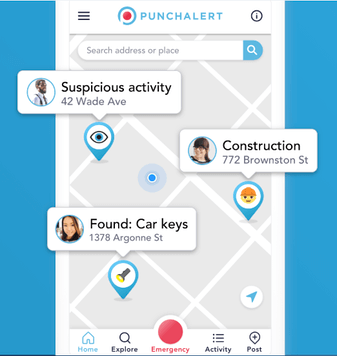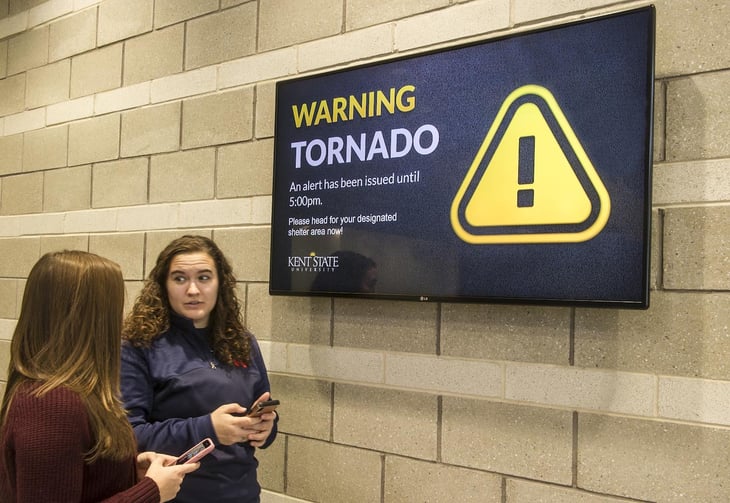
What is Internal Communication?
Internal communication is a catch-all term for sharing memos and ideas within your organization. Internal communications can range from a flyer hung on the wall advertising a social hour, to a formal communication about a policy change, to simply sharing the values of your organization to keep them top of mind for your audience.
Whatever the message is you’re communicating, it’s important to have infrastructure in place to share it quickly, efficiently, and often. In the digital era, the amount of information people have coming in on a day to day basis can be overwhelming. Read below to learn some tips and tools to having stellar internal communication so nothing at your organization falls through the cracks.
Types of Internal Communication
Since internal communication is a fairly generic term, we’re going to focus on 5 of the main types of internal communications and talk about the best tools for managing them. Some of the most common types of internal communications are:
- General communications
- Emergency alerts
- Peer communication
- Top-down communication
- Bottom-up communication
General Communications
For simplicity's sake, we’re going to use the term “general communications” for anything that doesn’t fall under the categories of top-down, emergency alerts, bottom-up, or peer communication. When we refer to general communications, we’re talking information that needs to be spread to your organization and comes from any branch or personnel. Here are some examples of general communications:
- Closing/holiday schedule
- School events
- Construction notice
- Upcoming social hour
As with most communications, email is a great tool for getting your message in front of your audience. But, given that the average person receives 121 emails per day, to ensure your message isn’t missed, you’re going to need to double down on your efforts. Here are some alternative tools you can use for sharing general communications:
Slack
Slack is an instant messaging app designed for professional use that enables file sharing, organizes conversations, and makes past conversations searchable. Using a tool like Slack, you can easily blast your message to your organization in a couple clicks. Plus, you can set up channels for a designated discussion. Have an upcoming off-site company event and need to sort out carpooling? Avoid the company-wide reply all syndrome by moving that announcement and corresponding chatter to a designated Slack channel.
Digital Signage
Digital signage is a really easy way to broadcast your message in a high traffic area. Installing digital signage in the front lobby, at the bottom of the elevators, or in the cafeteria ensures that your email or Slack message that went unnoticed earlier has another chance to make an impact. Digital signage also gives you an opportunity to communicate visually and with more creative oomph. To save time on designing your message, you can choose from a library of pre-designed Templates optimized for digital signage viewing and personalize them with your information.

Click here to get started with a free trial of Rise Vision so you can try it out for yourself.
Emergency Alerts
In the event of severe weather, natural disaster, a fire, or an intruder, it’s crucial to be able to disseminate information extremely quickly to your audience. To blast out a timely emergency communication, using email and instant messaging just isn’t going to cut it. You don’t want people to have to be at their desks or on their computers to receive an emergency notification--you need to interrupt their regular workflow to ensure they can’t miss it! In the event of an emergency, you need to have a plan in place and a designated alert system ready to go.
Emergency Notification System
Utilizing an emergency notification system allows you to report an emergency and notify your network at the push of a button. A social safety app like PunchAlert will help you stay safe and informed and can cut down drastically on the most crucial element in an emergency - response time. Plus, social safety apps allow you to alert people outside of your immediate network, and even allow you to be in contact with first responders.

Emergency Notification Systems and Digital Signage
Digital signage can often be used hand in hand with an emergency notification system like PunchAlert. Rise Vision’s digital signage platform is compatible with any emergency notification system that uses Common Alert Protocol, or CAP. A CAP-enabled emergency alert system is designed to disseminate an emergency notification to many different mediums with one touch.
Integrating your digital signage platform with your emergency alert system only needs to be done once, and after that you’ll be set up to trigger one-touch alerts across all your different mediums. Incorporating a visual element to your emergency notification system also ensures that people who are hearing impaired will have a fast and effective visual alert they can count on to keep them in the know.
 Peer Communications
Peer Communications
Peer communications are any type of informal communication that needs to be shared laterally across an organization and out to peers. Some examples of peer communication include: a last minute invite to a team-wide lunch, an invite to a professional network peers might be interested in, sharing an article that someone found useful with the rest of the organization, hashing out a problem on a shared project, and so on. Creating space for peer communication can strengthen employee relationships and establish trust among team members. And while the informal nature of peer communications makes them suitable for private channels such as text, 1:1 email, or instant messaging, lots of peer groups often fail to establish a base level of trust, understanding, and verbal communication across their team.
Communication Workshops
Peer communication is best built through person to person interactions, but finding a common language and developing a shared understanding of needs across teams can be challenging. Often, small gaps in communication styles can lead to disproportionate misunderstandings that can detract from productivity. Developing tools and a common language for communication is vital to a team’s success and can be nurtured with an in-person communication workshop like Real Colors.
A workshop like Real Colors aims to address common communication roadblocks and highlight different styles of communicators. By focusing on these human factors, each communication style gains insight into the others, better equipping them to extend empathy and understanding in an instance that may have otherwise caused confusion or halted communication altogether.
Top-down Communications
Top-down communications are messages that come from… well, the top! It could be a CEO, team leader, manager, school principal, or any team with decision making power and top level influence. With top-down communications, the goal is to disperse new information down through an organization to reach different locations, branches, and personnel.
Top-down communications can often contain information that wouldn’t be safe to share publicly. Company strategy, legal policies, and other sensitive information is best shared in a private channel. Aside from Slack and email, another great tool for sharing internal facing content with sensitive information is Interact.
Bottom-Up Communications
A successful organization doesn’t just take cues from their leaders, they also create space for new voices and collaborative sharing of ideas. There are also lots of benefits to promoting within your organization, so it’s important that people at all levels of your organization feel they have space to share their voice. Bottom-up communications are ideas or feedback generated at a lower level of an organization that should be shared upwards to improve conditions at your organization. Recognizing that employees at all levels are part of your organization’s bottom line and giving them a chance to see their ideas in action enhances employee performance and helps employees feel more invested in their work. Here are some tools to ensure that people at all levels of your organization have a chance to share their ideas:
Employee Feedback Survey
Regularly distributing an employee feedback survey gives people within your organization an opportunity to share their thoughts, problems, suggestions, and more. Often, employee feedback surveys are collected anonymously which creates a safe space to share thoughts without the concern of backlash or career growth interference.
Using a tool like Peakon allows you to collect employee feedback and convert the data into actionable items you can then attribute to overall improvement.
Digital Signage
While it’s best to have a handful of designated team members managing your organization’s digital signage, that doesn’t mean you shouldn’t encourage everyone to contribute content! Inviting employees to share a message on your digital signage, and highlighting employee achievements and accolades are two great ways to promote bottom-up communication and ensure that all the voices at your organization are heard.

Skip Level Meetings
Skip level meetings are just what they sound like - a meeting where you skip a level. More simply, a skip level is a meeting where instead of talking with a direct manager, a team or individual meets with their manager’s manager. This style of gathering feedback has proven itself very effective with distributing bottom-up feedback without the fear of confrontation that comes with directly delivering criticisms to a boss or manager.
Conclusion
Keeping lines of communication wide open at your organization will result in effective collaboration, a shared understanding and empathy, and an environment where everyone feels looped in. Utilizing tools specific to each channel will not only make things easier for your employees, but it’ll also make things easier for those tasked with managing your communications. Keep these tools in mind as you move forward and share information!





